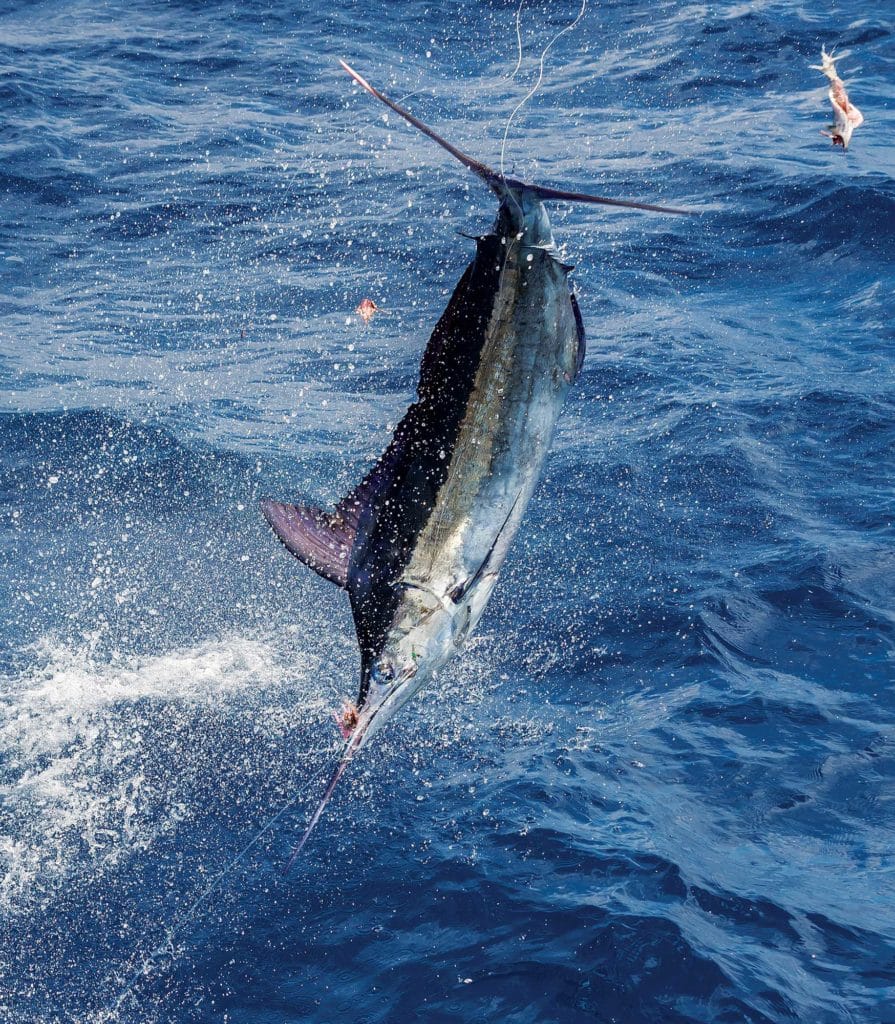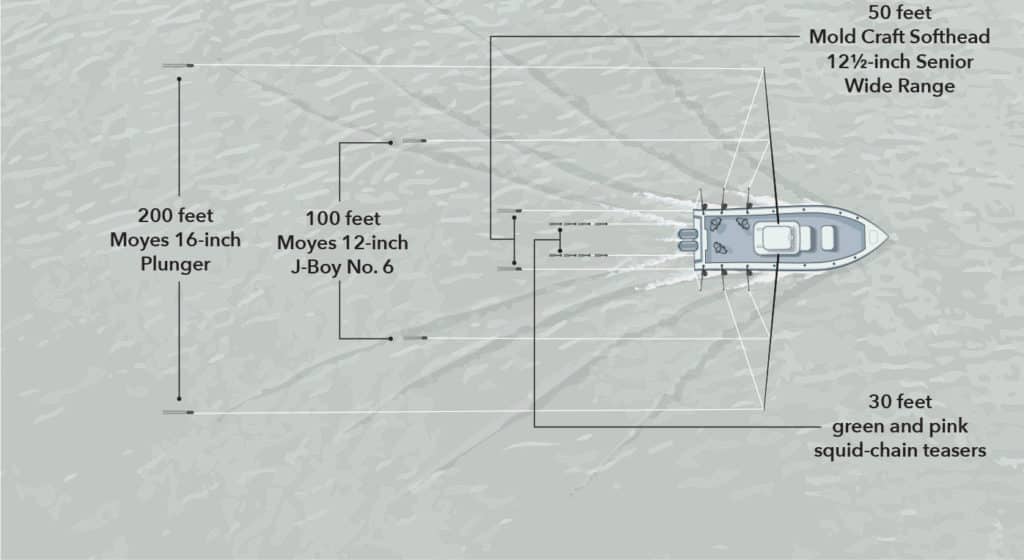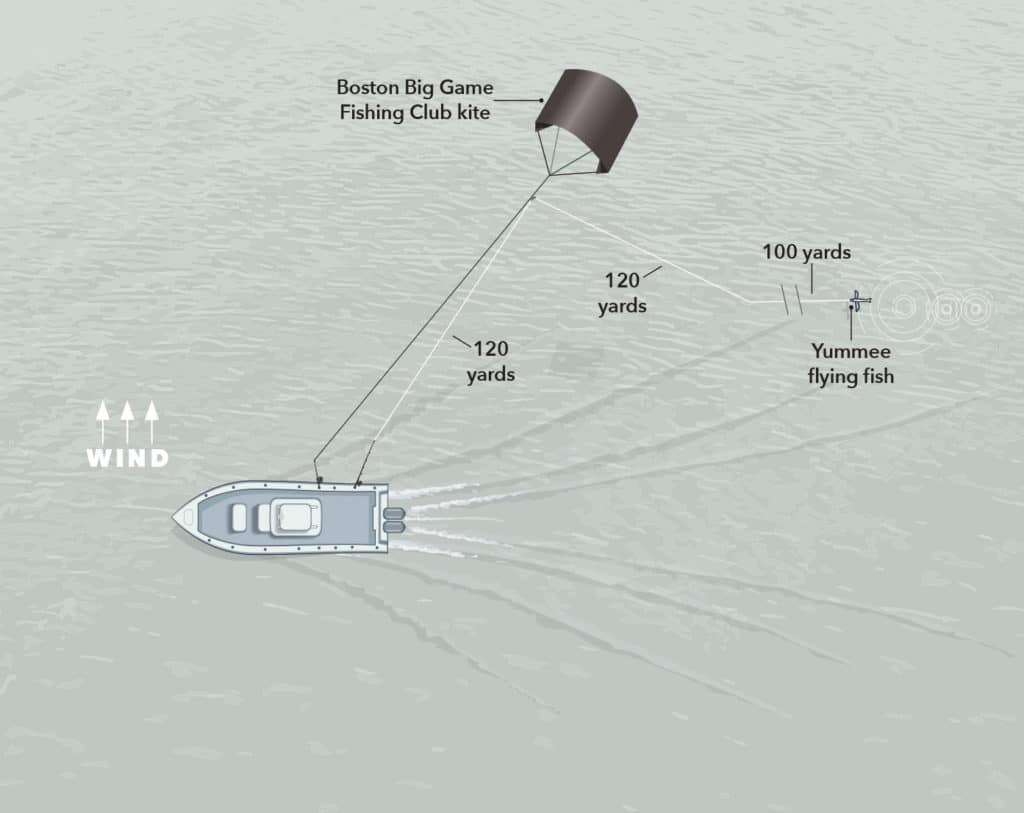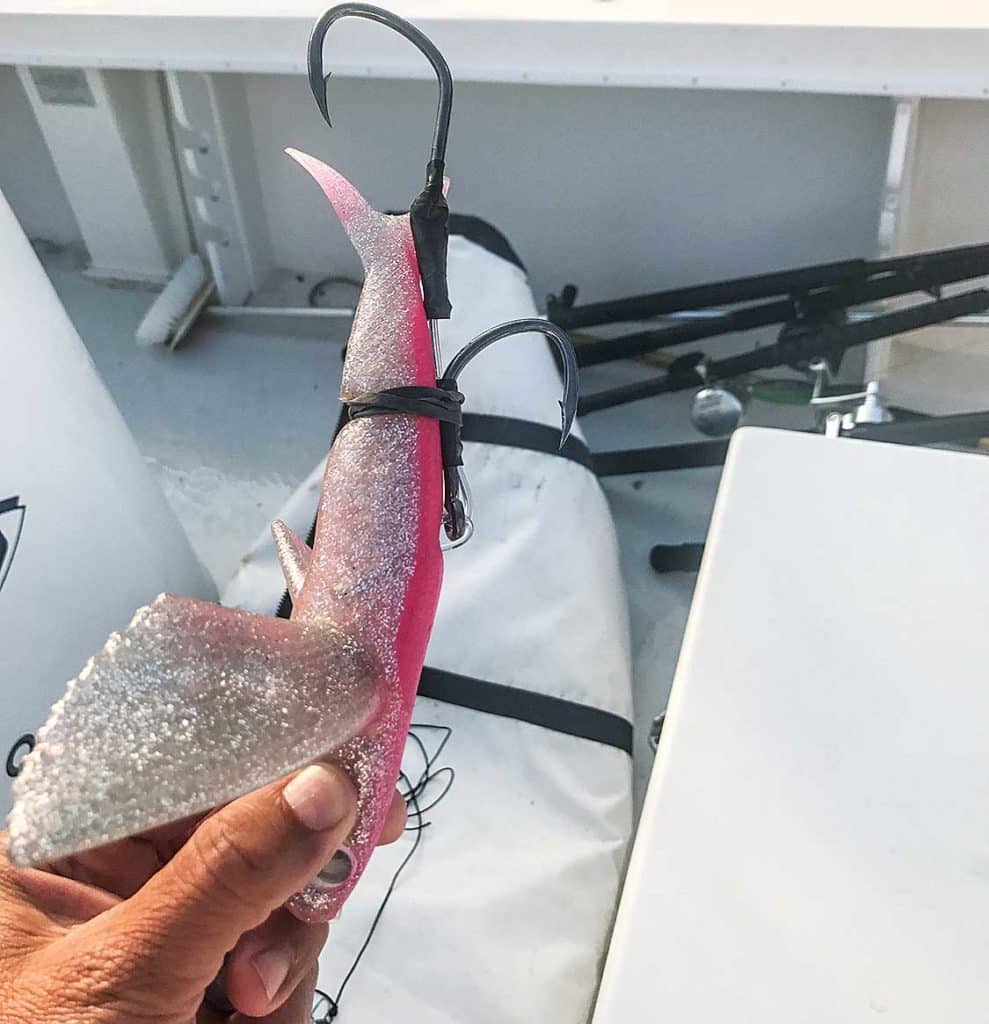
Top captains put a premium on precision when trolling, no matter what fish they target. They fuss over how their lures and baits look in the water, and they deploy each bait a specific distance behind their boats. They maintain their tackle in tiptop condition. They calibrate their reel drags, they test and perfect the knots they tie, and they demand the best line, leaders, hooks, crimps and swivels.
In other words, they leave nothing to chance when it comes to matters within their control. Of course, they can’t make the fish bite, but with their realistic trolling presentations, they significantly increase the odds of producing hookups. Here’s how three different trolling experts tackle the details.

Blue Marlin
Capt. Casey Hunt excels at trolling lures for blue marlin, but not just any lures. “I feel hands-down the best lure made for marlin fishing is an Andy Moyes lure because it swims like a baitfish,” says the Key West, Florida, freelance captain. “They’re perfectly balanced, and each one is designed for different speeds. I also love a Mold Craft Softhead. My biggest tournament wins have come on Softheads.”
Hunt’s favorite spread includes two Moyes 16-inch Plungers 200 feet behind the boat and two Moyes 12-inch J-Boy No. 6’s 100 feet back. Fifty feet behind the boat, Hunt trolls two Softhead 12½‑inch Senior Wide Ranges; each are 20 feet behind a squid-chain teaser (one green, one pink).
“Here’s the key,” Hunt adds. “Go no longer than three seconds without seeing the lure pop. Pop, smoke, pop, smoke — that’s just about perfect. I like to troll at around 8 knots but will change speeds according to the conditions.”
Hunt fishes the long and middle lines out of the outriggers. He runs the flat lines out of suction-cup clips attached to the transom. He favors black-and-purple lures, but he also uses pink-and-blue, black-and-orange, and black-and-green. He rigs the lures with a 10/0 stainless tuna-bend hook.
“I fish a swinging hook rigged with 600-pound cable. I like the hook still touching the lure skirt,” Hunt says. From the lure, he uses about 3 feet of 300-pound Momoi Xtra-Hard attached to a 500-pound Momoi swivel, then a 15-foot, 300-pound Xtra-Hard wind-on leader. He splices a 300-yard topshot of 100-pound Momoi to his 130-pound Momoi hollow-core-braid main line.

White Marlin
Jon Duffie of Ocean City, Maryland, has won and placed in numerous white marlin tournaments, fishing with family and friends on his boat Billfisher. The secrets to his team’s success include working efficiently and quickly. “The faster you can get the spread back out, and the less time you fight the fish, the better,” Duffie says. “We’re always numbers fishing.”
Duffie uses Shimano Talica 20 BFC reels and custom, 20-pound-class rods. He trolls small ballyhoo rigged with ⅛- to ⅜-ounce chin weights (the rougher the seas, the heavier the weight) on 7/0 Mustad circle hooks. He attaches the hooks to 6 feet of 60-pound Ande fluorocarbon leader tied to a 23-foot wind-on leader of clear, 80-pound Ande monofilament and a main line of 30-pound Ande Monster Yellow high‑viz mono.
He fishes two outrigger lines 100 to 200 feet behind the boat; sea conditions and how the fish react to the spread determine whether the lines run tighter or longer, or whether they’re staggered. Duffie also fishes two flat lines. The flat-line baits run just ahead of the two squid-chain teasers positioned 40 to 45 feet back. (Duffie attaches a hookless Ilander lure with a horse ballyhoo 3 feet behind the last squid.)
Each of his four anglers holds a rod virtually all day so they can beat the fish to the bait. “The fish are fast, and you don’t always see them coming,” says Duffie, who trolls at 7½ to 8 knots. “Having the rod in your hand, you can give a much smoother drop-back. I think it increases the hookup percentage.” Duffie also deploys two dredges 60 to 80 feet behind the boat, using either mullet with some Ilander lures for color, or perhaps ballyhoo or squid on the inside of a Squidnation dredge with mullet on the outside. When using the artificial squid, Duffie rigs dark-colored squid in the middle of the dredge and lighter squid toward the outside to give it the appearance of being a dense, tight ball of bait.
When he gets a marlin bite, he turns the boat in a circle to entice lingering schoolmates. “The best teaser you have when you’re hooked is that fish on your line,” Duffie says. “He’s thrashing, puking up whatever he has been eating, or he might be part of a school of fish. Your next bite is going to come when you pass the fish that you have on.”

Bluefin Tuna
Capt. Sean Canova of Unlimited Charters in Newport Beach, California (fishingchartersunlimited.com), has taken advantage of the recent appearance of 300-plus-pound Pacific bluefin tuna schooling 70 to 110 miles off the coast. Patience, he says, plays a critical role in his success.
Canova’s trips often last 30 to 36 hours — including a run to the fishing grounds of three to four hours. He won’t deploy a lure or bait until he marks tuna within 125 feet of the surface. “We’re looking for fish in that feeding zone,” says Canova, who runs three trips a week. “Being patient enough to get on the fish before you put out the bait, that’s the key. Most guys, once they’ve run 100 miles to get to the spot, they’re quick to get the baits out.
“I typically leave the dock at 5 p.m. and try to get a pre-dawn bite, right at gray light. Then it seems you get bit when the sun starts to go down. Between 5 p.m. and 7 p.m. is kind of a magic time for us. It’s a long tedious task getting one bite. A lot of guys do four or five passes and then move on. At times, I’ve been on the fish for six to nine hours. The guys who don’t give up get the bite.”
Canova uses a single Boston Big Game Fishing Club fishing kite to troll either one soft-plastic Yummee flying fish or one flying fish that he buys frozen from a few local bait shops. “These bigger bluefin don’t eat truly trolled lures,” says Canova, who trolls the Yummees at 8 to 10 knots and the natural baits at 4 to 6 knots so they skip across the water’s surface. He rigs them with a single 12/0 to 14/0 offset hook.

To the lure or hook, he ties 10 to 12 feet of 30-pound Seaguar fluorocarbon leader connected to a 150-yard topshot of 150-pound Jerry Brown Hollow Spectra line. He typically uses a San Diego jam knot for that leader-to-braid connection, inserting the leader 2 to 3 feet into the hollow braid. He secures the two by overwrapping 30-pound braid about 2 inches toward the fluorocarbon and then back.
Canova uses the same connection to attach 350 to 400 yards of 100-pound Power Pro braid to the other end of the topshot. He ties that Power Pro section with a double uni-knot to the 200 to 250 yards of 80-pound braid spooled onto an Accurate 50-wide reel. When Canova deploys the kite, about 120 yards of line runs up to the kite, about 120 yards flows down, and about 100 yards of line trolls in the water.
Read Next: Mahi! Secret Strategies of Four Experts
Canova ties a 2-inch-wide, 8-inch-long piece of black ribbon to the kite line just above where it enters the water so he can see the line with binoculars. He sets the strike drags on his reels to 27 to 30 pounds, using a spring-loaded scale; any less drag and a bluefin can spool you.
Close attention to these kinds of minute details gives these captains an edge when trolling. Make that kind of focus a priority, and you’ll catch more fish on the move.








